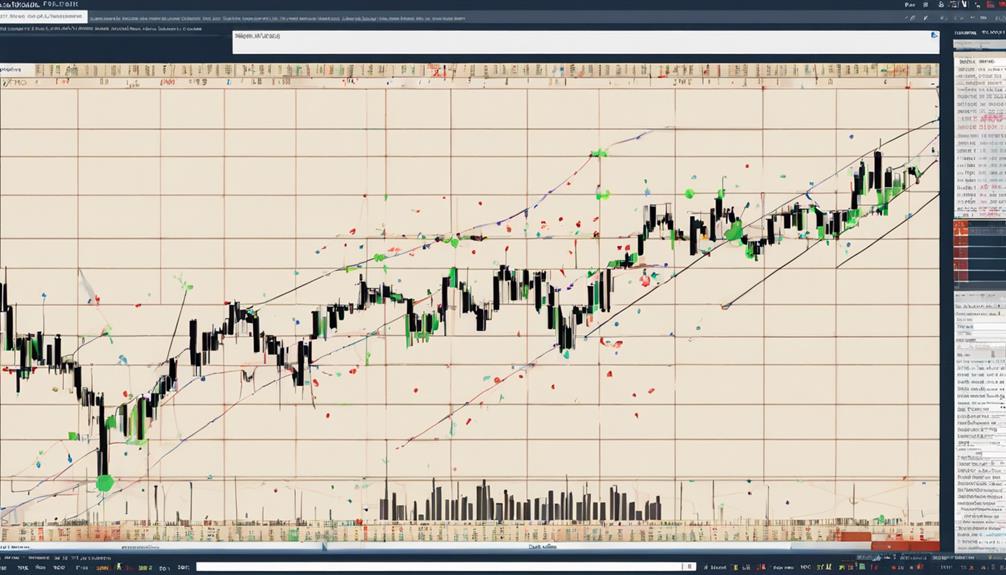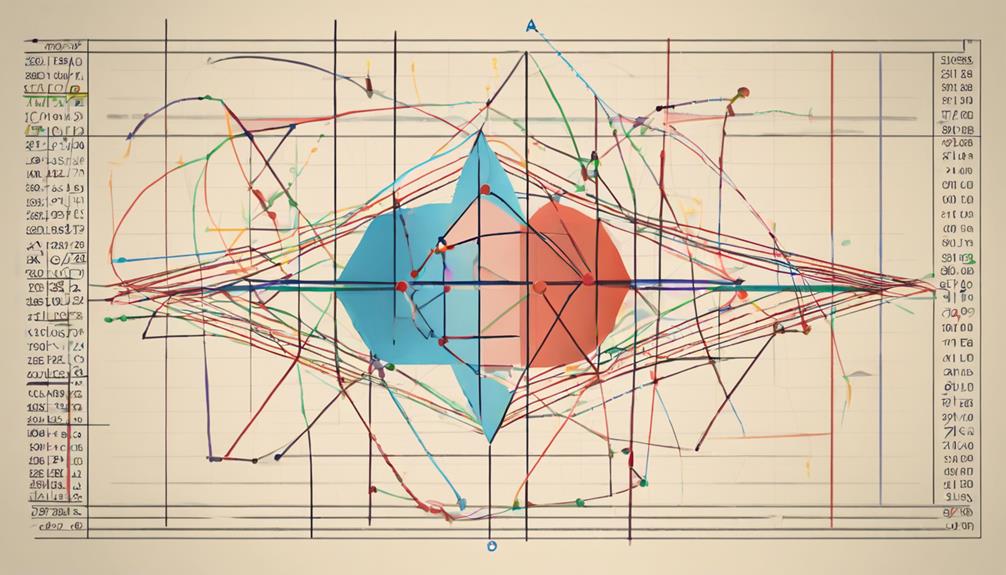Exploring the intricacies of Gann Theory unveils a realm of strategic trading insights that have stood the test of time. From its inception by William D. Gann to its application in modern markets, the principles embedded in this approach offer a unique perspective on market behavior.
As traders delve deeper into Gann Theory's tools and techniques, a doorway opens to a structured framework that transcends traditional analysis methods. This systematic approach not only enhances decision-making but also equips traders with a holistic understanding of market dynamics.
Understanding Gann Theory Basics
In delving into the foundational principles of Gann Theory, one must grasp the innovative methodology devised by W.D. Gann in the early 1900s to intricately evaluate stock price movements through the application of geometric shapes and angles. Gann Angles, such as the 1×1 angle representing a 45-degree slope, play a crucial role in identifying bullish and bearish trends in the market.
These angles provide key support and resistance levels that aid traders in making informed decisions based on the analysis of stock price movements. By understanding Gann Theory basics, traders can effectively interpret market trends and anticipate potential reversals with a high degree of accuracy. This approach involves utilizing price theory and Gann time to study patterns, enabling traders to enhance their decision-making processes and predict market movements more effectively.
Mastering these foundational concepts is essential for traders looking to leverage Gann Theory in successful trading strategies.
Applying Gann Angles in Trading

Utilizing Gann Angles in trading offers traders a strategic framework for identifying key support and resistance levels essential for making well-informed market decisions with a high degree of accuracy.
Gann Angles, derived from Gann Theory, are based on the idea that specific angles can help predict future price movements. These angles, when applied to price charts, create trend lines that assist traders in determining potential market trends.
The nine Gann angles identified provide insight into bullish or bearish market conditions, with the 1×1 angle considered the most crucial due to its representation of a one-point change over one unit of time.
Gann Theory's Support and Resistance Levels

Gann Theory's identification of support and resistance levels at specific angles serves as a fundamental aspect of strategic market analysis and decision-making in trading. Understanding these key levels is crucial for traders to navigate price movements effectively.
Here are four essential points regarding Gann Theory's support and resistance levels:
- Gann Theory identifies support levels at 1/2 and 2/1 angles, providing critical zones where price bounces are likely to occur.
- Resistance levels are typically found at 1/4 and 4/1 angles, indicating areas where price movements may face barriers.
- Gann angles help traders pinpoint key support and resistance zones, aiding in the placement of stop-loss and take-profit levels.
- These angles offer a precise framework for traders to anticipate potential price reversals or stalls, enabling them to make informed trading decisions based on Gann Theory's principles.
Predicting Price Movements With Gann Theory

Drawing on Gann Theory's principles of geometric shapes and angle analysis, the prediction of price movements becomes a strategic endeavor rooted in analytical precision and market insight. Gann angles, derived from this theory, provide key support and resistance levels that aid traders in analyzing stock price trends and forecasting potential market movements.
By utilizing angle trend lines, traders can effectively predict market trends and make informed decisions to maximize returns. The systematic approach offered by Gann Theory allows traders to analyze stock market movements through the lens of geometric shapes and price patterns, offering a holistic view of potential price movements.
Enhancing Trading Decisions With Gann Theory

Enhancing trading decisions with Gann Theory involves leveraging geometric shapes and angle analysis to optimize market forecasting and strategic decision-making. Gann Theory offers a structured framework that traders can utilize to enhance their trading approach and make informed decisions.
When incorporating Gann Theory into trading strategies, traders can benefit in the following ways:
- Predictions: By understanding Gann's geometric shapes and angles, traders can make more accurate predictions about future price movements.
- Support and Resistance Levels: Gann Angles help identify key support and resistance levels in the market, guiding traders on entry and exit points.
- Market Trends: Gann Theory provides insights into market trends and potential reversals, allowing traders to stay ahead of major shifts in the market.
- Forecasting: Through the application of Gann Theory, traders can leverage natural time cycles to improve their forecasting accuracy and make more informed trading decisions.
How Does Gann Theory Contribute to Successful Trading?
Gann theory for trading plays a crucial role in successful trading by providing valuable insights on market patterns and future price movements. Traders use Gann theory principles, such as geometric angles and time cycles, to make informed decisions and improve their trading accuracy.
Frequently Asked Questions
What Is Gann Theory in Trading?
Gann Theory in trading is a method that utilizes geometric shapes and natural cycles to forecast price movements. Developed by William D. Gann, this approach offers a systematic way to analyze market trends and predict reversals with high accuracy.
What Is the Gann's Rule of Four?
Gann's Rule of Four is a technical analysis tool that focuses on analyzing the four most recent price bars on a chart. It helps traders identify potential trends and reversals, guiding informed decisions on entry and exit points.
What Is the 9 5 Gann Rule?
The 9 5 Gann Rule states that after 9 consecutive rising days in the market, a 5-day correction is likely to follow. This rule, based on W.D. Gann's observations, helps traders anticipate and manage risks during corrective phases.
How Accurate Is Gann Analysis?
Gann analysis, a predictive tool, demonstrates a high degree of accuracy in forecasting future price movements. By utilizing mathematical and geometric principles, Gann theory offers traders a systematic approach to analyzing markets and predicting investor behavior effectively.
Conclusion
In conclusion, Gann Theory offers traders a systematic approach to analyzing market trends and making informed trading decisions.
By leveraging geometric shapes and natural time cycles, traders can predict future price movements with a high degree of accuracy.
Understanding Gann Angles, support and resistance levels, and utilizing this framework can enhance trading strategies and improve overall performance in dynamic financial markets.
Embracing Gann Theory's principles can lead to successful trading outcomes and increased profitability.
